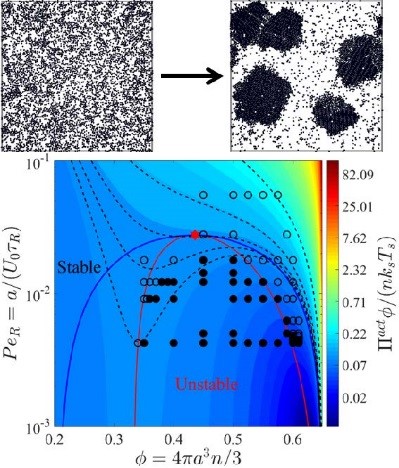Figure 1: Athermal phase separation of active matter. (Adapted from Takatori & Brady PRE (2015).)
A distinguishing feature of many living systems is their ability to move, to self-propel—to be active. Through their motion living systems are able self-assemble: birds flock, fish school, bacteria swarm, etc. But such behavior is not limited to living systems. Recent advances in colloid chemistry have led to the development of synthetic, nonliving particles that are able to undergo autonomous motion by converting chemical energy into mechanical motion and work—chemical swimming.
This swimming or intrinsic activity imparts new behaviors to active matter that distinguish it from equilibrium systems. Active matter generates its own internal pressure (or stress), which can drive it far from equilibrium, and by so doing active matter can control and direct its own behavior and that of its surroundings. In this talk I will discuss our recent work on active matter and on the origin of a new source of stress that is responsible for self-assembly and pattern formation in active matter systems.
Bio - Dr. Brady’s research interests are in the mechanical and transport properties of two-phase materials, especially complex fluids such as biological liquids, colloid dispersions, suspensions, porous media, active matter, etc. His research combines statistical and continuum mechanics to understand how macroscopic behavior emerges from microscale physics. He is the co-inventor of the Stokesian Dynamics technique for simulating the behavior of particles dispersed in a viscous fluid under a wide range of conditions. Recently, Dr. Brady discovered a new organizing principle for active matter known as the swim pressure.Dr. Brady has been recognized for his work by several awards, including a Presidential Young Investigator Award, the Professional Progress Award of the American Institute of Chemical Engineers, the Bingham Medal of the Society of Rheology and the Fluid Dynamics Prize of the American Physical Society. Dr. Brady served as an associate editor of the Journal of Fluid Mechanics and editor of the Journal of Rheology. He is a fellow of the American Physical Society, the American Academy of Arts & Sciences and a member of the National Academy of Engineering.
Event Details
Date/Time:
-
Date:Wednesday, September 13, 2017 - 11:00am to 12:00pm
Location:
Love 109
For More Information Contact
Prof. David Hu



